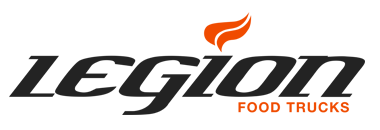Safety is one of the most important considerations when building a food truck. Operating any food establishment requires adhering to strict regulations to address potential safety threats such as fire hazards, physical injuries, food spoilage, electrical breakdowns, and more. Plus, because mobile food trucks are often on the road, you also have to account for the potential risk of motor accidents.
Regulation authorities provide guidelines on the minimum safety requirements that food trucks must meet, one of which is installing safety equipment. Here’s a rundown of the essentials you’ll need before starting your food truck.
Fire Suppression System
Food trucks face significant fire risks from propane, portable generators, chemicals, cooking oil spills, and more. To minimize fire danger, it’s absolutely essential to install a fire suppression system. An automatic fire suppression system prevents fire from spreading by shutting down the fuel/electric supply to cooking equipment when a fire is detected. Once installed, the system should be professionally inspected regularly to ensure it’s always functional and meets the code requirements.
Ventilation System
Optimal ventilation is crucial, especially with the limited space of a food truck. Without proper ventilation, grease, vapor, and smoke buildup heighten the risk of a fire outbreak. Grease can also make the surfaces slippery, heightining the risk of slips and falls. Poor ventilation can also raise humidity, leading to food spoilage.
Different cities may have specific ventilation requirements that food trucks must meet. For instance, the San Diego County government requires all mobile food trucks to install exhaust ventilation equipment, grease baffles, and fans. The mechanical ventilation equipment must always be operational and maintained to meet the code requirements. The exhaust system may require more frequent inspections to check for grease buildup, as it significantly increases the risk of fire hazards.
Fire Extinguishers
Food trucks must also install portable fire extinguishers, which should be inspected by the fire department annually. There are two types of fire extinguishers food trucks need to have.
- Class K extinguishers – These are specially designed to combat cooking fires. Oil, fats, and grease are highly flammable, burn at high temperatures, and spread quickly, making them hard to combat with ordinary extinguishers. However, for optimal performance of the extinguisher, you should deploy it after activating the hood suppression system.
- ABC extinguishers – In addition to class K, you still need ABC extinguishers to combat fires from other sources like electric, paper, and plastic.
First Aid Kits
Food trucks must have first aid kits placed in an easily accessible location. Having the equipment ready enables you to administer the necessary aid promptly when a health emergency arises.
Other important safety measures include having an emergency exit and fitting the deep fryers, coffee urns, and steam tables with secure, latch-closing lids.
Learn More About Installing Safety Equipment with Legion Food Trucks
Installing safety equipment in your food truck helps protect you and your staff against potential hazards. It also ensures your food truck is compliant with the relevant safety regulations. At Legion Food Trucks, we specialize in building custom, high-end food trucks that align with clients’ visions and meet the necessary government regulations. If you’d like to learn more about installing safety equipment in your food truck or want help bringing your dream to life, feel free to get in touch with us!




![8 Must-Know Food Truck Trends and Statistics [2024]](https://legionfoodtrucks.com/wp-content/uploads/2023/12/food-truck-trends-and-stats-1024x576.jpg)


